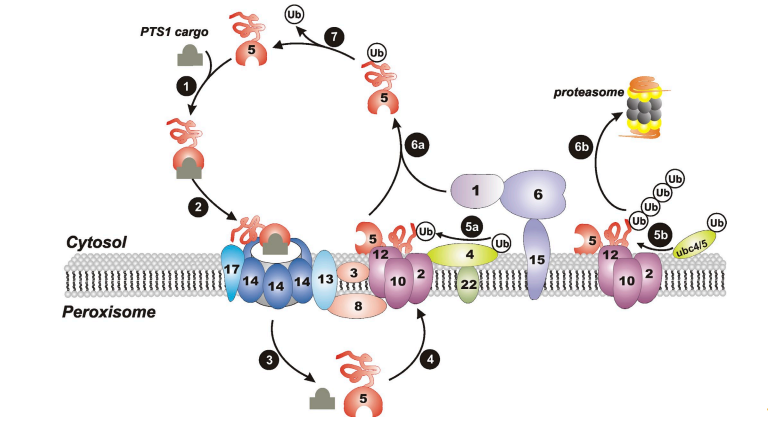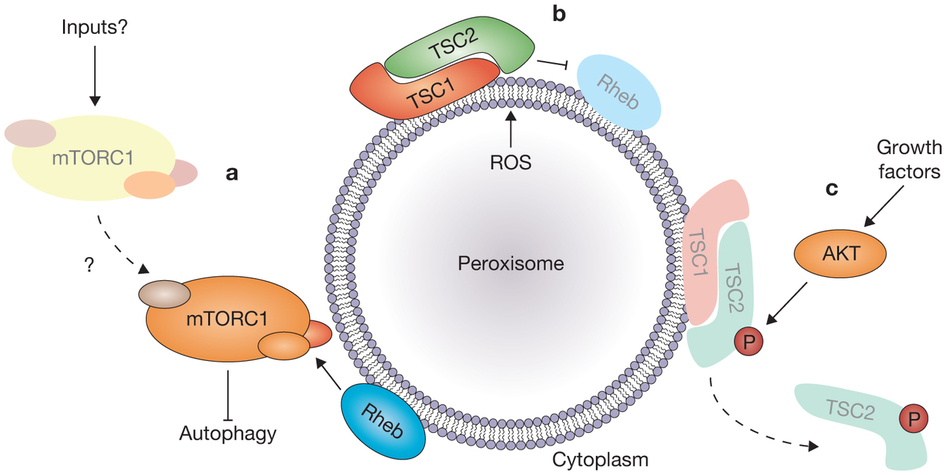
Welcome to the Subramani lab webpage at UCSD. Our research interests focus on the peroxisome biogenesis and peroxisome turnover in general. Our model organisms are Pichia pastoris, mammalian cells and budding yeast. We have included here information about our research, publications and lab members.
Initiated academia-industry partnerships in undergraduate education, biotechnology industry internships for undergraduates, as well as meetings between faculty and scientists/managers from the biotechnology industry. Participated as a Steering Committee Member in the establishment of graduate and undergraduate programs in bioinformatics at UCSD, and in the initiation of the Rady School of Management at UCSD. As Chairman of Biology, served as the administrative head of a Department of about 65 faculty and several hundred permanent and temporary staff. Spearheaded the reorganization of the Department of Biology into a new Division of Biological Sciences with four Sections (departments). As Associate Dean, served as the liaison between the Chairs of the four Sections within the Division of Biological Sciences and other campus units including the Division of Physical Sciences and the School of Engineering. As Interim Dean, managed a Division of 4 sections comprising 75 faculty, 283 graduate students, 170 post-doctoral fellows and almost 1000 employees. Developed in 2007 a vision for the Division for 2010 and beyond (Charting the Course IV). Also involved in raising funds (about $5 million) through Development activities involving private and corporate donors and engagement of 20,000 alumni. This included completion of agreements for two endowed chairs, Merck funding for the Dean's Symposium, increased endowment support for the Heiligenberg Chair, creation of the endowed Eng Research Fund and continuation of Grey Matters public lecture series at the San Diego Natural History Museum. Established best practices in stewardship of donors within the Division of Biological Sciences, including an annual endowment report to donors. Worked actively to increase diversity among faculty and embraced standards for ethical conduct among faculty and staff. Directed an active external relations and public outreach program involving science education for school and college teachers, as well as the public. As Assoc. Vice Chancellor, helped the Senior Vice Chancellor of Academic Affairs (SVCAA) manage the biggest budget crisis in UCSD history with transparency and protection of the Academic core. Aided the SVCAA and UCSD in handling many crises such as diversity-related protests, developed a general compensation plan for UC faculty, chaired a committee that developed a business plan for the Chancellor for a research cyberinfrastructure for UCSD, and managed resources and space (3 million asf) allocations for the SVCAA. As Acting Senior Vice Chancellor for Academic Affairs and as Exec. Vice Chancellor (EVC) at UCSD, oversaw all faculty appointments, merits and promotions for the UCSD general campus, School of Medicine and Scripps Institute of Oceanography, managed a budget of over $300 million and was responsible for all the graduate and undergraduate academic programs, organized research units, and interdisciplinary programs at UCSD. As Director of Affymax (India Operations), managed a group of about 30 scientists in India in the areas of chemistry, biology and scientific IT for Affymax Research Institute, Palo Alto (subsidiary of GlaxoSmithKline). Participated in the establishment of one of India’s first biotechnology parks, called IKPL (ICICI Knowledge Park Ltd.), Hyderabad, India. Aided Glaxo Wellcome Inc. in the establishment of a medical informatics group in India.

Peroxisomes are known as essential subcellular organelles that are ubiquitously present in all eukaryotes and with glycosomes (protozoan peroxisome) and glyoxysomes (plant peroxisomes) constitute the microbody family. Microbodies share their basic properties and are very adaptable organelles and often exhibit extraordinary specializations.
Depending on the species, peroxisomes sequester specific
enzymes for metabolizing distinct substrates, which often provide
the organismvital adaptability, enabling it to survive in unique environments.
In animal cells, peroxisomes are essential for the biosynthesis of cholesterol, dolichol, bile acids and most importantly in the β-oxidation of branched chain and
very long-chain fatty acids and catabolism of polyamines and D-amino
acids. Peroxisomes are also essential for the biosynthesis of the
glycerophospholipids: plasmalogens, which are highly abundant in
themyelin sheath of neurons. Evidently, several peroxisomal biogenesis
disorders (PBDs) are associated with the nervous system.
Peroxisomes were identified as organelles by the Belgian cytologist Christian de Duve in 1967[6] after they had been first described by a Swedish doctoral student, J. Rhodin in 1954.[7]